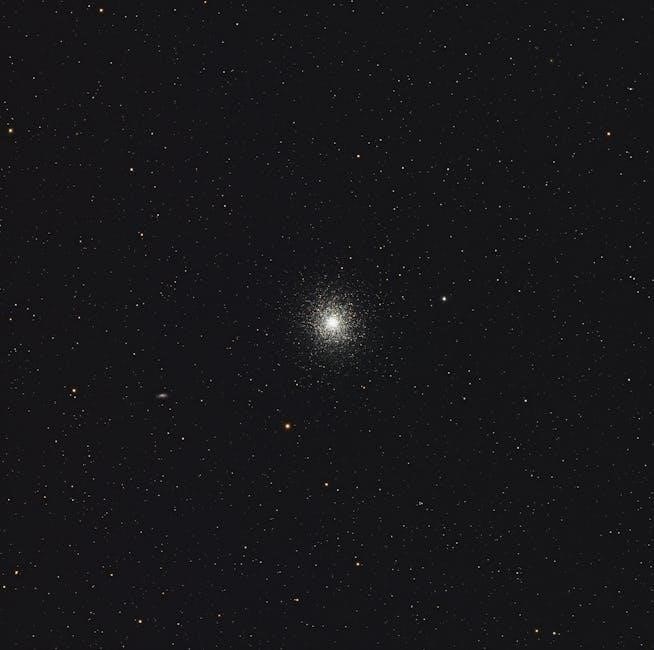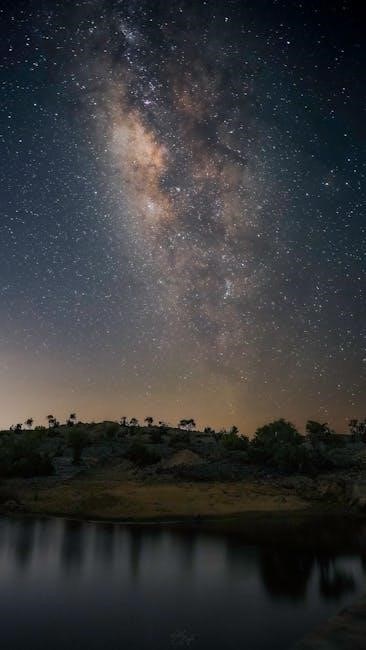Identifying the First Edition
The first edition of The Hitchhiker’s Guide to the Galaxy was published by Arthur Barker in 1979. Identifying this edition involves verifying the publisher on the copyright page. The date of publication, 1979, must also be explicitly stated within the book.
Publisher and Date
To ascertain if you have a first edition of Douglas Adams’s The Hitchhiker’s Guide to the Galaxy, meticulously examine the publication information. The publisher should be clearly stated as Arthur Barker on the copyright page. This is a crucial indicator, as later editions would bear different publishing imprints.
Confirm that the date of publication is explicitly stated as 1979. This date must appear on the copyright page, typically found at the front of the book. Scrutinize this area for any discrepancies or indications of later printings. The absence of this information might suggest a subsequent edition.
Note that some versions may have slightly edited versions, so identifying the correct publisher is vital. Disregard information from other versions, such as the NPR Playhouse aired version, as this is irrelevant to identifying the book’s first edition. Only the Arthur Barker 1979 edition qualifies as the true first.
Dust Jacket Details (Capricorn One ad, price)
Authenticating a first edition of The Hitchhiker’s Guide to the Galaxy involves careful examination of the dust jacket. A key identifier is the presence of a “Capricorn One” advertisement on the rear panel. This ad is a hallmark of the first issue and signifies its early printing status.
The price printed on the dust jacket’s inside flap is also vital. The original price should be £4.95 net. Any variation in this price suggests a later edition or a reprint. Ensure the price is clearly printed and not clipped or altered.
Further, the blue rear panel of the dust jacket is another characteristic feature. The combination of the “Capricorn One” advertisement, the £4.95 price, and the blue rear panel collectively confirm the dust jacket’s originality. Absence of these features indicates a later edition and reduces its collectibility.
First Edition Indicators (stated first edition, number line)

Identifying a true first edition of The Hitchhiker’s Guide to the Galaxy requires checking for specific statements and sequences within the book; Look for a clear statement on the copyright page explicitly indicating “First Edition.” This declaration is a primary indicator of its status as a first printing.
Another crucial element is the presence and format of the number line. A complete number line, typically descending from 10 to 1, confirms the book’s initial print run; The absence of the number “1” signifies it is not a first edition.
Some American editions might state “First American Edition” alongside a full number line. Always verify the publisher and publication date align with the first edition criteria. The combination of the “First Edition” statement and a complete number line offers definitive proof of its authenticity and value as a collectible.

Key Features of the First Edition
The original cover art and design are defining characteristics. The first edition features unique artwork, distinct from later reprints. These visual elements are crucial for identifying a true first edition copy of the book.
Cover Art and Design
The cover art of the first edition is a key identifier. It features a specific design that sets it apart from subsequent editions. Collectors should pay close attention to the colors used, the font style, and the overall layout. Any variations from the original design may indicate a later printing.
The original dust jacket is also of significance. It typically showcases a unique illustration that captures the whimsical nature of the story. The artwork is integral to the book’s identity. The presence of specific design elements, such as the font and the arrangement of text, are crucial details.
Examine the spine for any inconsistencies or alterations. First editions often have a particular spine design that was later modified. It’s important to verify the artwork against known first edition examples. The cover’s texture and the quality of the printing can also provide clues. A genuine first edition will have a distinct visual appeal. Always cross-reference with reliable sources to confirm the cover’s authenticity.
Size and Dimensions
The size and dimensions of the first edition can be a useful indicator of its authenticity. While it may be smaller than a standard hardcover, measuring the book accurately is essential. Slight variations from the original dimensions might suggest a later printing or binding.
Collectors should consult established bibliographies or resources that provide the exact height, width, and thickness of the first edition. These measurements serve as a benchmark for comparison. Be aware that different editions may have subtle differences in size due to variations in printing or binding processes.
Pay attention to the thickness of the spine as well, as this can vary between editions. Any significant deviation from the standard dimensions should raise a red flag. It is crucial to use precise measuring tools to ensure accuracy. The size and dimensions, when combined with other identifying factors, contribute to verifying the book’s first edition status. Careful attention to detail is essential in this process.
Internal Characteristics (endpapers, illustrations)
Examining the internal characteristics of a first edition of The Hitchhiker’s Guide to the Galaxy involves scrutinizing elements like endpapers and any included illustrations. Some editions feature distinctive endpapers, which can be a reliable marker for identification. The presence or absence of specific illustrations, and their style, are important details to note.
The paper quality used in the first edition is also a factor. Comparing the paper stock to known characteristics can help determine authenticity. Look for any unique printing flaws or anomalies that might be consistent with the first printing.
Check for any specific fonts or typesetting styles that were used in the original edition. Scrutinize the title page and copyright page for any unique identifiers. Pay attention to the overall layout and design of the book’s interior. Any deviations from these characteristics could suggest a later printing. Careful examination of these internal details is crucial for verifying the book’s first edition status. Illustrated editions may have unique signatures.

Rarity and Collectibility
First editions of The Hitchhiker’s Guide to the Galaxy are surprisingly scarce and highly sought after by collectors. Their value is influenced by factors such as condition, signatures, and the presence of key identifying features.
Signed Copies
Signed first editions of The Hitchhiker’s Guide to the Galaxy represent the pinnacle of collectibility for fans and book enthusiasts alike. These copies, bearing the signature of Douglas Adams, are significantly rarer and command a premium price in the market. A genuine signature adds immense value, transforming a collectible book into a treasured artifact.
The presence of Adams’ signature not only enhances the book’s monetary worth but also its historical and sentimental value. Signed copies are particularly desirable when the signature is boldly and clearly written, ideally without inscription, on the title page. The date of the signature, especially if it coincides with the year of publication (1979) or a significant event related to the book, can further increase its appeal.
Collectors should exercise caution and authenticate signatures before investing in a signed copy, as forgeries are a possibility. A certified signature from a reputable source or bookseller adds an extra layer of assurance and confirms the authenticity of the signed first edition.
Condition Considerations
The condition of a first edition of The Hitchhiker’s Guide to the Galaxy is a critical factor influencing its value and collectibility. Copies are often found “read to death” due to the book’s immense popularity, making well-preserved copies highly sought after. Collectors should meticulously assess both the book and the dust jacket.
For the book itself, look for clean, unmarked pages with minimal foxing or staining. The binding should be tight and the spine intact. The dust jacket should be complete, unclipped, and free from significant tears, chips, or fading. Toning to the endflaps is common but should be minimal.
A fine or near-fine copy, with only minor imperfections, will command a significantly higher price than a copy in lesser condition. Collectors should also note any inscriptions or markings, as these can detract from the book’s value unless they are from the author. Protective covers are also good for maintaining the condition of the book.

Related Adaptations and Versions
The Hitchhiker’s Guide to the Galaxy has spawned numerous adaptations, including a BBC radio series that predates the novel. Illustrated editions and later printings offer alternative ways to experience Douglas Adams’s iconic story.
BBC Radio Series (1978)
Before the book, The Hitchhiker’s Guide to the Galaxy originated as a BBC Radio 4 series, first airing in March 1978. This radio comedy served as the foundation for the entire franchise. The series introduced listeners to Arthur Dent’s intergalactic misadventures and the iconic characters that populate his world.
The BBC’s practice at the time sometimes led to interesting situations. For instance, a Christmas-related plotline was deemed unsuitable and replaced with a bridging episode between series. This episode later appeared as part of the second radio series, also called The Secondary Phase.
Edited versions of both The Primary and Secondary Phases were broadcast in the United States on NPR Playhouse. The radio series’ success propelled Douglas Adams to adapt his work into other forms, including the novel, cementing its place in popular culture.
Illustrated Editions
Illustrated editions of The Hitchhiker’s Guide to the Galaxy enhance the reading experience with visual representations of the story’s whimsical universe. The first illustrated edition is a significant collectible, particularly if signed by Douglas Adams.
These editions often feature unique cover art, pictorial endpapers, and internal illustrations that bring the characters and settings to life. A notable example is the folio edition, published in 1994, which includes Adams’ signature on the title page. Such signed copies are considered rare and highly desirable.
Collectors should examine the condition of both the book and the dust jacket. Bright illustrations and a well-preserved jacket enhance the value. The illustrated editions offer a fresh perspective on Adams’ classic, making them treasured additions to any fan’s collection.
Later Printings and Editions
Distinguishing later printings and editions of The Hitchhiker’s Guide to the Galaxy from the first edition requires careful attention to detail. Later printings lack the key characteristics that define the first edition, such as the stated “first edition” on the copyright page and a specific number line.
These later editions often have different cover designs, ISBNs, and publisher imprints. Some may include additional content, such as introductions by other authors or supplementary material related to adaptations. The size and dimensions of the book might also vary from the original.
While later printings and editions are more common and less valuable than the first edition, they can still be of interest to collectors looking for affordable reading copies or specific versions with unique features. Always verify the edition details to ensure accurate identification.
